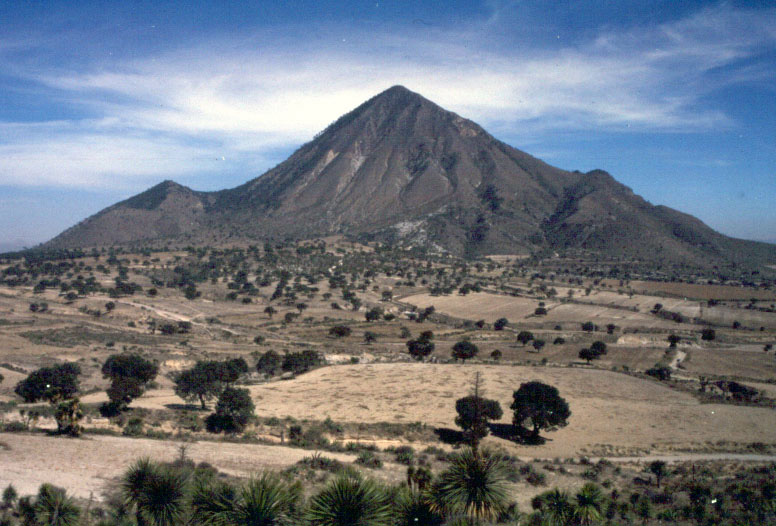Mexico

Cerro Pizarro, Estado de Pueblo, Mexico;
Photo by G. Carrasco-Nunez
Small-volume, isolated domes and dome complexes are one of the coolest things going, as they seem to be unpredictable. I have been working with Gerardo Carrasco from the University of Mexico at Queretaro for several years on isolated domes in east-central Mexico. Rhyolite domes, in theory, have a simple history that starts with a small explosive eruption that clears out the vent, followed by passive effusion of lava. You can guess that if it were always that simple, we wouldn't be studying them...
The hazards around stratovolcanoes are well-enough understood (although obviously specific to each volcano), but before the on-going eruptions of Soufriere Hills Volcano at Montserrat, many people didn't pay much attention to domes. Likewise, most hazards analyses are based on the maritime climate common around stratovolcanoes (convergent margins are often along continental margins). East-central Mexico, specifically the Serdan-Oriental basin, has several rhyolite domes, some of which we understand and are providing the clues to an assessment of hazards associated with them. The two papers linked here (Riggs and Carrasco-Nunez, 2004 and Carrasco-Nunez and Riggs, in press; the quality of the figures of the latter is not great) are about Cerro Pizarro, a beautifully exposed isolated dome (pictured above) in an arid climate with a complex evolution that we understand in large part. What we don't know is how the dome began its disintegration process, and what importance those processes would have if a dome were to form now.

Cerro Pinto, to the right, is a dome/tuff ring complex that was apparently short lived, but went through some odd permutations in the process. Unlike most tuff rings, emplacement was dominantly by fall rather than surge. This odd permutation needs investigating - what was going on?
Although the on-going eruption of Soufriere Hills has taught us a lot about dome volcanism, we still don't know much about how isolated domes erupt, and how their products may be distributed, whether effusive or explosive.
Cerro Pizarro is in the eastern part of the Trans-Mexican Volcanic Belt, a zone that is world-renown for its active volcanoes, especially the stratovolcanoes [Colima, Citlalteptl (Orizaba), Popoceteptl (Popo)], some of which tower over major cities. The lowlands around the isolated domes we are studying are not heavily populated, but it is unwise to assume particular population movements when major cities are threatened by active volcanism.
Theses that have been completed in the last several years on the Mexican domes are a study of vent processes based on analysis of pumice (Siobhan McConnell, 2004), a comparative study of remotely sensed data on surge and fall deposits from Cerro Pinto and from a dome complex in the Superstition Mountains near Phoenix (Christina Jan, 2005), and a physical-volcanology study of Cerro Pinto dome (Brian Zimmer, 2007). Matt Schmidt will start in F08, looking at Las Aguilas, and from there we will potentially do a study of Las Derrumbadas dome and move westward, where many more rhyolite domes are exposed near San Luis Potosi. Theses from mapping to pumice studies to conduit-process speculations are possible!

